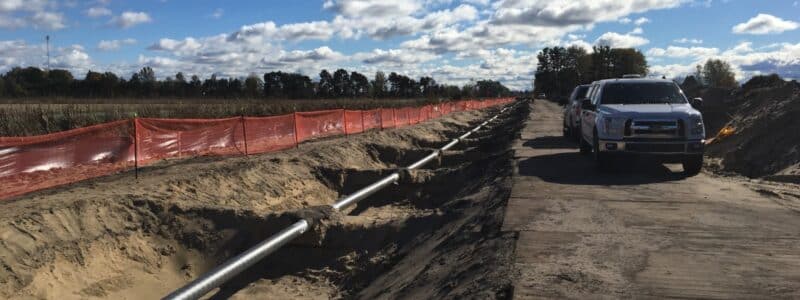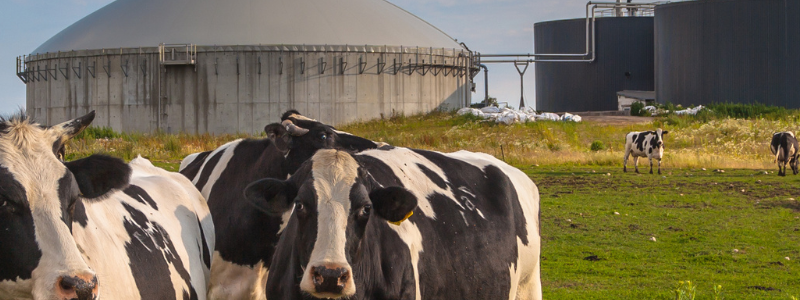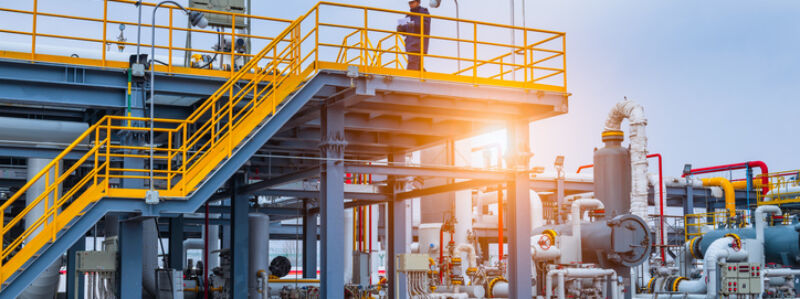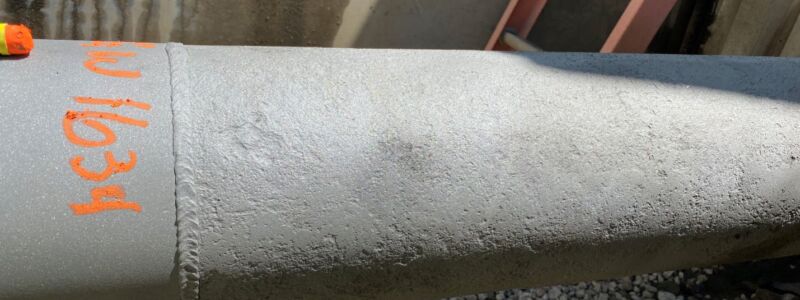Reducing risk with emergency flow restriction devices
- Federal regulations enforced by PHMSA require that natural gas and hazardous liquid pipelines be equipped with an effective system of Emergency Flow Restricting Devices (EFRDs).
- The regulations prescribe baseline maximum spacings for EFRDs, but also require operators to evaluate where additional EFRDs could be placed to most effectively reduce the consequences of a pipeline failure.
- High Consequence Areas are the focus of the EFRD regulations.
- For liquid pipelines, the elevation profile is critical to determining which potential ERFD locations are best.
- Check valves are a low-tech, low cost EFRD option, but only protect against leaks upstream of their location.
- Remote controlled or automatic valves stop flow both directions but are dependent on power, sensors, and/or the speed of a control center’s response time.
- HT Engineering can help pipeline operators meet their EFRD evaluation obligations.
In many rural communities across the country, there are people who toil away in quite ordinary occupations – furniture salespeople, mechanics, insurance agents and others. But when needed, like mild-mannered Clark Kent becoming Superman, they jump into an entirely different role as volunteer firefighters, search and rescue team members, or First Aid workers. When the crisis is met, they return to their usual daily routine.
Pipelines utilize an equivalent concept – one that springs into action when there’s a leak or spill. It’s known as the emergency response system. Many of the elements of this system, such as valves, are like a town’s citizens with other full-time jobs – but when there’s a problem, they take on their Emergency Flow Restricting Device (EFRD) role.
Most pipeline operators hope they never need to see their EFRD system used to stop the flow from a rupture, just as emergency volunteers hope that a major flood, fire, or other disaster never threatens their community. But they’re quietly confident that they’re up to the challenge.
Residents of San Bruno, California found out tragically what can happen when an EFRD system doesn’t do its job – a pipeline explosion on September 9, 2010, on a 30-inch gas line owned by Pacific Gas & Electric destroyed dozens of homes and killed eight people. This incident is critical to the EFRD discussion because there were no automatic shutoff or remote-control valves on the line that exploded. In addition, response teams took longer than expected to find and close the manually operated valves needed to stop the flow of gas to the rupture location.
It’s for situations like the one in San Bruno that PHMSA now requires pipeline operators to have an EFRD system that minimizes the consequences of potential pipeline failures. The federal code enforced by PHMSA mandates that operators evaluate pipelines that are subject to Integrity Management rules to determine where additional EFRDs could be placed along the line to provide the greatest risk reduction benefit, and to quantify that reduction relative to the risk of the existing system.
In this insights post, we look at the purposes of EFRD legislation, how EFRDs fit into an emergency response system, what an EFRD evaluation involves, and some of ways HT Engineering can help effectively and efficiently mitigate leak and rupture consequences with EFRDs.
Purpose of the PHMSA regulations
The PHMSA regulations require pipeline operators to install EFRDs at certain locations along each pipeline segment to limit the amount of product that could be released in the event of a rupture or leak. Each new EFRD must be able to restrict flow within 30 minutes of when the operator identifies a potential rupture. Operators are also required to evaluate where additional EFRDs could be located to most effectively reduce the consequences of a pipeline failure, and to install new valves where they determine they are necessary.
The focus for minimizing the impact of pipeline integrity failures is on High Consequence Areas (HCAs) – including residential areas, sources of drinking water, and environmentally sensitive areas such as waterways and wetlands. PHMSA recently updated the regulations for new valves to enable faster isolation of rupture locations, enhancing the protection of HCAs.
The many parts of an Emergency Response system
Just as a community’s emergency response system contains multiple skillsets and types of equipment, there are various components that contribute to the effectiveness of an Emergency Response system. Here are the key aspects relative to EFRDs:
Leak detection
Pipeline operators need a way to identify when a leak or rupture has occurred on a pipeline segment. Detection methods can utilize pressure, flow rate, and even acoustic sensors. Leak detection systems are outside the purview of an EFRD evaluation, but operators evaluating potential EFRD locations will need accurate calculations on response time (from rupture occurrence to valve closure) to accurately determine risk levels.
Identification of potential rupture
While the regulations provide a basic definition for the leak detection system outputs that must be treated as a rupture, they also allow operators to evaluate their systems and determine what should trigger an emergency isolation for their specific facilities and operating conditions.
EFRD valve network
If a rupture is identified, the system must have the tried and tested ability to close any valves needed to stop the flow of product to the rupture location. Valve selection in an EFRD system is critical:
- Check valves – They can often respond before a leak is detected by the control room. They close when the flow in the pipeline reverses, but only prevent flow from reaching ruptures upstream of their location.
- Automated or remotely controlled block valves – These are more flexible because they block flow in two directions, but their response depends on the availability of power and on commands from the control room or automated controllers, and they take time – sometimes a significant amount of it – to close.
- Manual block valves – These can be considered part of the EFRD system only if they can be reliably reached and operated on short notice.
Considering elevation is essential for liquid pipelines
One of the key drivers of the consequence of a rupture on a liquid pipeline is its elevation profile. As an example, consider river crossings. These often involve a downward run of pipe followed by a climb out of the valley, with an ecologically sensitive and geologically dynamic waterway nestled in between. If a rupture occurs near the river, and no EFRDs are present to stop flow, much of the volume of the section of pipeline located in the valley will drain into the water. Rivers are typically High Consequence Areas (HCAs), and have the potential to quickly spread product far from the pipeline’s location. Even in areas where no waterways are present, elevation dictates a component of the predicted spill volume as well as the path the liquid will take, and hence the areas it will impact, as it follows gravity’s pull downhill from the rupture site.
While it can still play a role at times, elevation is less of a consideration for natural gas lines with their low product density.
EFRD Evaluation
To maintain compliance, operators must evaluate where new EFRD installations could reduce risk and determine if any new EFRDs are needed. The evaluator is responsible for determining the potential consequences of a leak or rupture at every point on the line, then determining how existing EFRDs do and additional EFRDs could affect those consequences. This provides the data needed to determine how a pipeline operator can get the most bang for their buck with the measures they must take to bring the line into compliance and any additional measures they can take to reduce risk.
The documentation for the evaluation should be in the form of a report that clearly presents the methodology used to arrive at a quantitative profile for rupture consequence along the line and the process used to identity optimal EFRD locations and types. The report should present the operator’s options for new EFRD installations in such a way that they can easily weigh these opportunities for risk reduction against other opportunities in their portfolios of other potential preventive and mitigative measures.
As noted, for liquid lines, evaluators must consider the topography along the line itself and close to it on either side, modeling how far a liquid spill will spread, and whether it will impact an HCA. In one recent instance, HTE was able to recommend installing a check valve just downstream of where a line crossed a watercourse, upstream of a long upgrade, which significantly reduced the pipeline’s risk profile.
How HT Engineering can help
Some of the ways HT Engineering can support pipeline operators with the effectiveness of their emergency response systems and EFRDs are:
- Leak detection system analysis and design
- System analysis to determine the characteristics of a notification of potential rupture
- Performing EFRD evaluations to determine cost-benefit (risk reduction) optimized locations, with risk quantified per your (the operator’s) custom
- Updating EFRD evaluations after changes in pipeline operations or to HCAs – new housing developments, changes in the natural environment, etc.
- Recommending EFRD valve types based on pipeline and power/communications context
- Providing engineering, design, and project management for EFRD installation or upgrade projects
- Updating operating and emergency response procedures to comply with the new PHMSA requirements
- Using evaluations to support stakeholder relations
Please reach out today to let us know how we can help you ensure that your pipeline system’s EFRDs are fit for purpose: the right types in the right places, ready to mitigate the rupture that we all hope will never happen.












